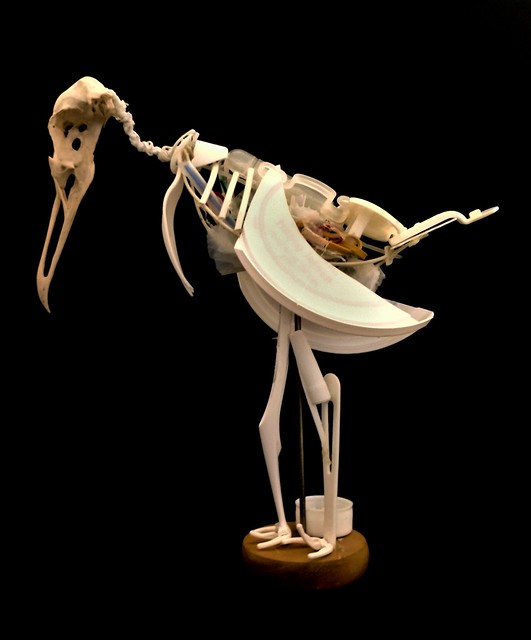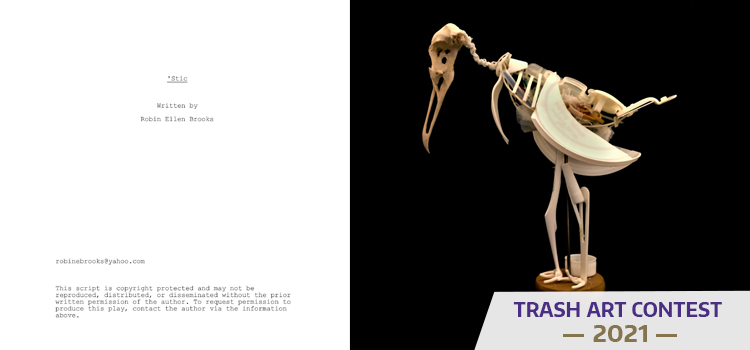
Winners of the 2021 Trash Art Contest express impacts on the environment through written and sculpted art pieces.
Enter the 2022 Trash Art Contest
Garbage may not be the most ideal art material, but it combines conservation and art creation to achieve profound results.
This can be seen firsthand in the submissions from this year's art contest. From a one-act play about a sustainably-minded couple to a net made from plastic envelopes, each art piece shows how art can shift perceptions of waste.
The contest prompts artists to create pieces from items normally thought of as trash or to express feelings and ideas about waste through written work. UW Recycling's goal for the competition is to raise awareness about waste's impact on the environment and build community.
The UW Recycling selection committee chose six winners in the two categories. Click the name of the artwork to read the artwork's description below.
Literature category winners
- ‘Stic by Robin Ellen Brooks
- A plastic haiku suite by Ginger Rebstock
Graphic & visual arts category
- Future Vision by Hannah Zizza
- Trash Fairy Crown by Jane Skau
- Camera Model Toy by Anna Hong
- A Play on Shadow by Ali Sykes
Submissions were judged based on the following criteria: originality and creativity, theme of sustainability, material usage, and relevance to personal and/or UW campus waste.
The winning art pieces in each category are highlighted in detail below.
Record-breaking participation
This year's contest received over 35 submissions from students, staff and faculty members. There were even special submissions by the toddlers & preschoolers at the UW Children's Center at West Campus, showing how people can make treasure out of trash at any age.
Click the slideshow below or see the album on Flickr to view all of the graphic and visual art submissions.
The submissions amazed the UW Recycling selection committee, especially some artists' focus on waste changes during the pandemic.
"I was so impressed by the variety of art we received this year. I especially enjoyed the pieces that used PPE and other materials to discuss feelings about life in the pandemic," said UW Recycling Program Coordinator Audrey Taber. "We may feel isolated in many ways, but viewing these pieces and reading the artists' words creates a sense of unity and connection."
Literature category
Written work such as an essay, poetry, drama, or a story
1st place winner: 'Stic by Robin Ellen Brooks (One Act Play)
Brief description and theme of the art piece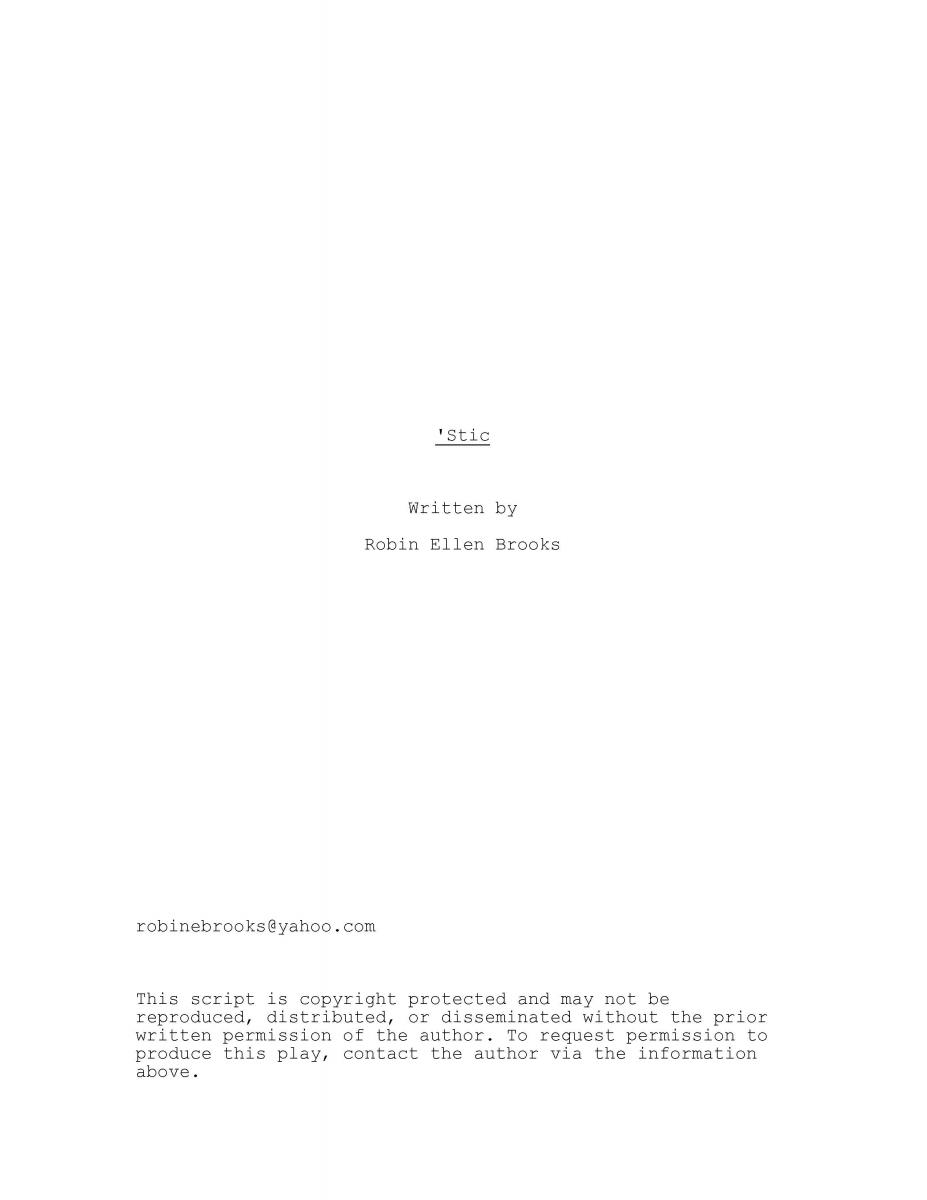
Dynamite couple Pickle and Trace aim to be the most environmentally-conscious humans they can be, but the polluted and artificial confines of our synthetic world present problems they have difficulty overcoming.
How is this relevant to your personal and/or UW campus waste?
Like Pickle and Trace, I too am trying to limit and reduce my environmental footprint. I hope that this play, if chosen, will help to inspire others to think about their use of resources, and plastic in particular, in mindful ways. The piece is also meant to be a catalyst for discussion on various topics such as intent vs. impact, personal responsibility, corporate pollution, and environmental stewardship.
This artist is a staff member of UW Recreation. You can follow them @UWRecreation on both Facebook and Twitter.
2nd place winner: A plastic haiku suite by Ginger Rebstock
Oceans are crying,
Drowning. Strangled, embarrassed,
Haunted by plastic.Majestic mountains,
Distant beauty, close-up marred,
Pieces of plastic.Around penguin's neck
A fisherman's thoughtlessness,
Bright ring of plastic.In flycatcher's nest
Bright, unnatural color,
Red strings of plastic.Mountains of plastic,
Streets, rivers, landfills, oceans.
With us forever.
Brief description and theme of the art piece
The piece is a suite of 5 haiku poems about plastic in nature. It spans ocean and land, and impacts from the landscape level to individual birds.
How is this relevant to your personal and/or UW campus waste?
I study Magellanic penguins and once had to capture a penguin and cut the plastic ring from around its neck. I'm also a birdwatcher and have seen numerous birds' nests with pieces of plastic incorporated.
This artist is a researcher at the Center for Ecosystem Sentinels.
Graphic & visual arts category
Painting, design, photography, drawing, collage, or sculpture
Update to category: After careful consideration of the submissions, the committee decided to combine the graphic and visual arts categories. Only a few artists submitted their work to the graphic arts category and their submissions could be interpreted as the visual arts category under our definition. We acknowledge this caused some confusion so we expanded the graphic & visual arts category to have four winners. First and second place will receive $100 gift cards and third and fourth place will receive $50 gift cards. Next year, the committee looks forward to adjusting the categories for simpler submission.
1st place winner: Future Vision by Hannah Zizza
Art piece made from found plastic and bird skull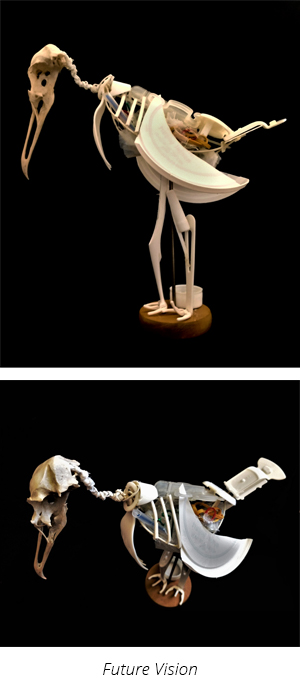
Brief description and theme of the art piece
In this piece I constructed a bird skeleton out of plastic in order to raise awareness for the plight of marine wildlife, millions of whom die each year from ingesting or becoming entangled in plastic debris. There is an estimated 5.25 trillion pieces of plastic in the ocean, with 10 million tons being dumped every year. We all have a responsibility to take action against this by always recycling and no longer buying single use plastics.
How is this relevant to your personal and/or UW campus waste?
This sculpture was made from the plastic waste I collected over one week of regular consumption. I was inspired by the artist Gregg Segal's series "7 Days of Garbage" which photographs people surrounded by the waste they generated over a week. Just like the subjects of these pictures, I was surprised by just how much trash I do produce, which makes me realize how we all need to do more in our daily life if we ever hope to achieve a sustainable future.
Follow the artist on Instagram @hannahzizza
2nd place winner: Trash Fairy Crown by Jane Skau
Brief description and theme of the art piece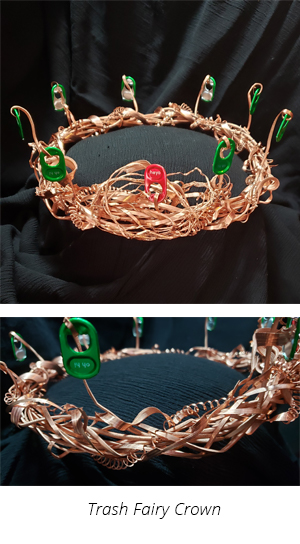
Woven from discarded copper scrap and accented by colorful aluminum can tabs, this crown sparkles in the sun and softly tinkles in the breeze--truly the prize of Urban Fairy Royalty!
This crown represents the entitlement of our consumerist society--a society conditioned to replace instead of reuse and to prize brand-newness while scoffing at hand-me-downs. We produce so much material wealth and shockingly large amount of it winds up in landfills because it is out of fashion, or "costs too much" to recycle (but at what cost to our environment and natural resources?).
How is this relevant to your personal and/or UW campus waste?
As a Building Coordinator, I see people throw away a lot of things--things that could be reused, recycled, or composted. I know it's easier to just throw everything into one bin and have it all disappear, but the truth is that it doesn't disappear. Someday, all this un-decomposed trash will come back to haunt us. Future consequences are often hard to conceptualize at the moment of choice, but if we create trash-avoiding habits, that moment of choice becomes less of a chore and more of just a thing we do.
Reused and repurposed items also save money, not just UW departments, but also individuals and families at home. I'm not saying that people shouldn't buy consumer products, just that folks should take a breath after seeing a fancy ad and consider for a moment whether the latest product really is the greatest product.
Follow the artist on Instagram @janeskau
3rd place winner: Camera Model Toy by Anna Hong
Art piece created from an Amazon box, rubber band and leftover letter sized paper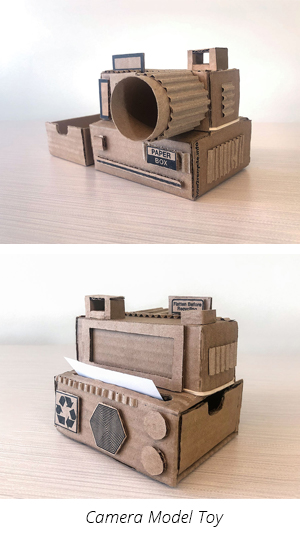
Brief description and theme of the art piece
As the name entails, this is a camera model toy made of an old Amazon box that was sent to one of my friends. It was created with the idea of being able to create children's toys out of recycled cardboard.
This camera is not only for imaginative play, but a way for children to practice and develop their artistic skills with the game notation embedded into the design. Using the viewfinder, the child is able to "take pictures" and then draw what they took an image using the dual storage system that can hold used and unused paper with whatever drawing utensil they may have with them. For an added challenge, parents may also help time the child so that they only have 90 seconds to recreate what they took a picture of (the time a Polaroid takes to develop).
And of course, this model can also be broadened to any user if an individual just wants a unique storage piece to hold their Polaroid pictures.
How is this relevant to your personal and/or UW campus waste?
This is relevant to personal/UW campus waste as I was able to create this piece literally out of garbage that I took from a friend's recycling bin as well as out of the trash room in my residence hall. I wanted the design itself to echo recycling themes by ensuring to carefully incorporate symbols on the amazon box including the recycling logo, a link that leads to a recycling website, and a phrase that states "please flatten before recycling." On a few other other models, there is also a QR code that leads to a recycling information/education site too. Nothing was purchased for this entire project as I already had the tools lying around in a box or dug it out of recycling!
I was able to repurpose trash that I would have just thrown out into a children's toy and when that toy's life cycle runs out, it can also become a Polaroid storage piece, giving this cardboard box two new purposes.
I created nearly 7 total models of this camera that will be hopefully distributed to my hallmates (each camera belonging to a cardboard box given to me)!
Follow the artist on Instagram @astrannaz
4th place winner: A Play on Shadow by Ali Sykes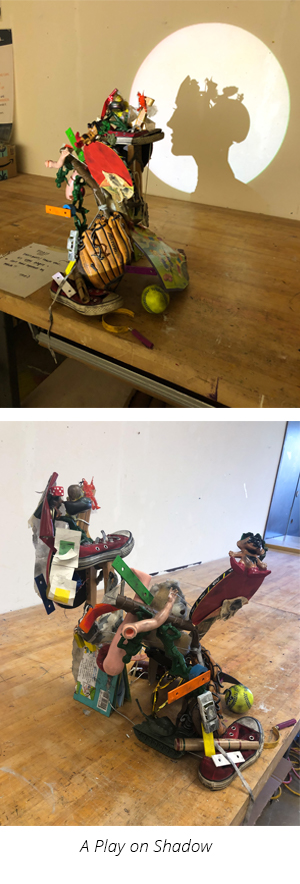
Art piece made from found objects, super glue and string
Brief description and theme of the art piece
This is a found object sculpture that uses light and shadow to create an intentional silhouette.
How is this relevant to your personal and/or UW campus waste?
I used old toys and childhood relics that are now considered trash to create a narrative in my piece.
Follow the artist on Instagram @alisykesart
The UW Recycling team thanks everyone who participated for making the 2021 Trash Art Contest a success! The competition was part of this year's Campus Race to Zero Waste (previously RecycleMania). Campus Race to Zero Waste will be happening again in 2022 and we're looking forward to planning next year's contest. In the meantime, stay in touch with us on Instagram or Facebook at @uwrecycling or contact us at recycle@uw.edu.
